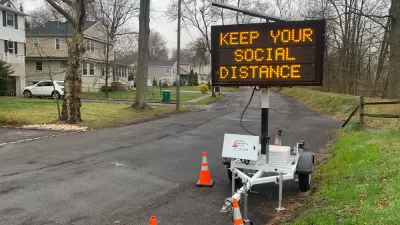In Amanda Erickson's explanation of the history of urban planning, the profession as conceived at the start of the 20th century confronted a choice between creating beautiful people or beautiful cities. Why couldn't planners have created both?
In the years before urban planning crystallized as a distinct profession, Erickson sees the influence of "three types of people thinking about how a city
should look and function - architects, public health officials, and
social workers."
According to Erickson, at America's first urban planning conference, held in New York in 1898, "and in the years that followed, any one of these
early urban planning strains could have taken over as the intellectual
giant in the field. Though the social workers and the public health
officials continued to play a role, urban planning's intellectual
history ended up grounded in architecture."
In this "brief history," Erickson concludes that the profession's grounding in design and physical space led directly to the use of planning as a tool for oppression. "As Stuart Meck, a professor of urban planning at Rutgers explains,
cities used urban planning not to build better, or cleaner, or morally
uplifting cities. They used planners to divide the city, creating
beautiful spaces at the expense of the poor."
FULL STORY: A Brief History of the Birth of Urban Planning

Planetizen Federal Action Tracker
A weekly monitor of how Trump’s orders and actions are impacting planners and planning in America.

Restaurant Patios Were a Pandemic Win — Why Were They so Hard to Keep?
Social distancing requirements and changes in travel patterns prompted cities to pilot new uses for street and sidewalk space. Then it got complicated.

Map: Where Senate Republicans Want to Sell Your Public Lands
For public land advocates, the Senate Republicans’ proposal to sell millions of acres of public land in the West is “the biggest fight of their careers.”

Maui's Vacation Rental Debate Turns Ugly
Verbal attacks, misinformation campaigns and fistfights plague a high-stakes debate to convert thousands of vacation rentals into long-term housing.

San Francisco Suspends Traffic Calming Amidst Record Deaths
Citing “a challenging fiscal landscape,” the city will cease the program on the heels of 42 traffic deaths, including 24 pedestrians.

California Homeless Arrests, Citations Spike After Ruling
An investigation reveals that anti-homeless actions increased up to 500% after Grants Pass v. Johnson — even in cities claiming no policy change.
Urban Design for Planners 1: Software Tools
This six-course series explores essential urban design concepts using open source software and equips planners with the tools they need to participate fully in the urban design process.
Planning for Universal Design
Learn the tools for implementing Universal Design in planning regulations.
Heyer Gruel & Associates PA
JM Goldson LLC
Custer County Colorado
City of Camden Redevelopment Agency
City of Astoria
Transportation Research & Education Center (TREC) at Portland State University
Camden Redevelopment Agency
City of Claremont
Municipality of Princeton (NJ)





























